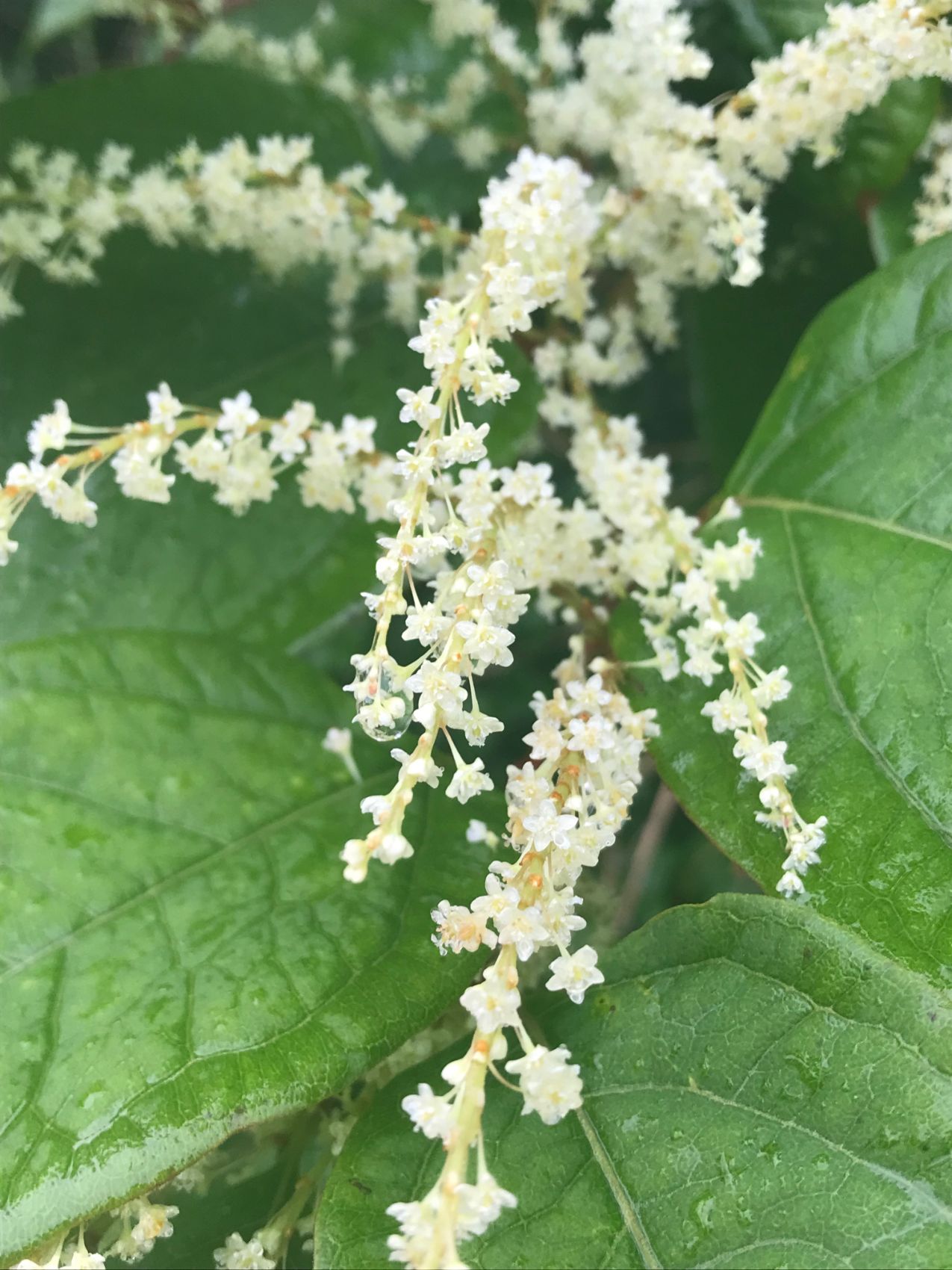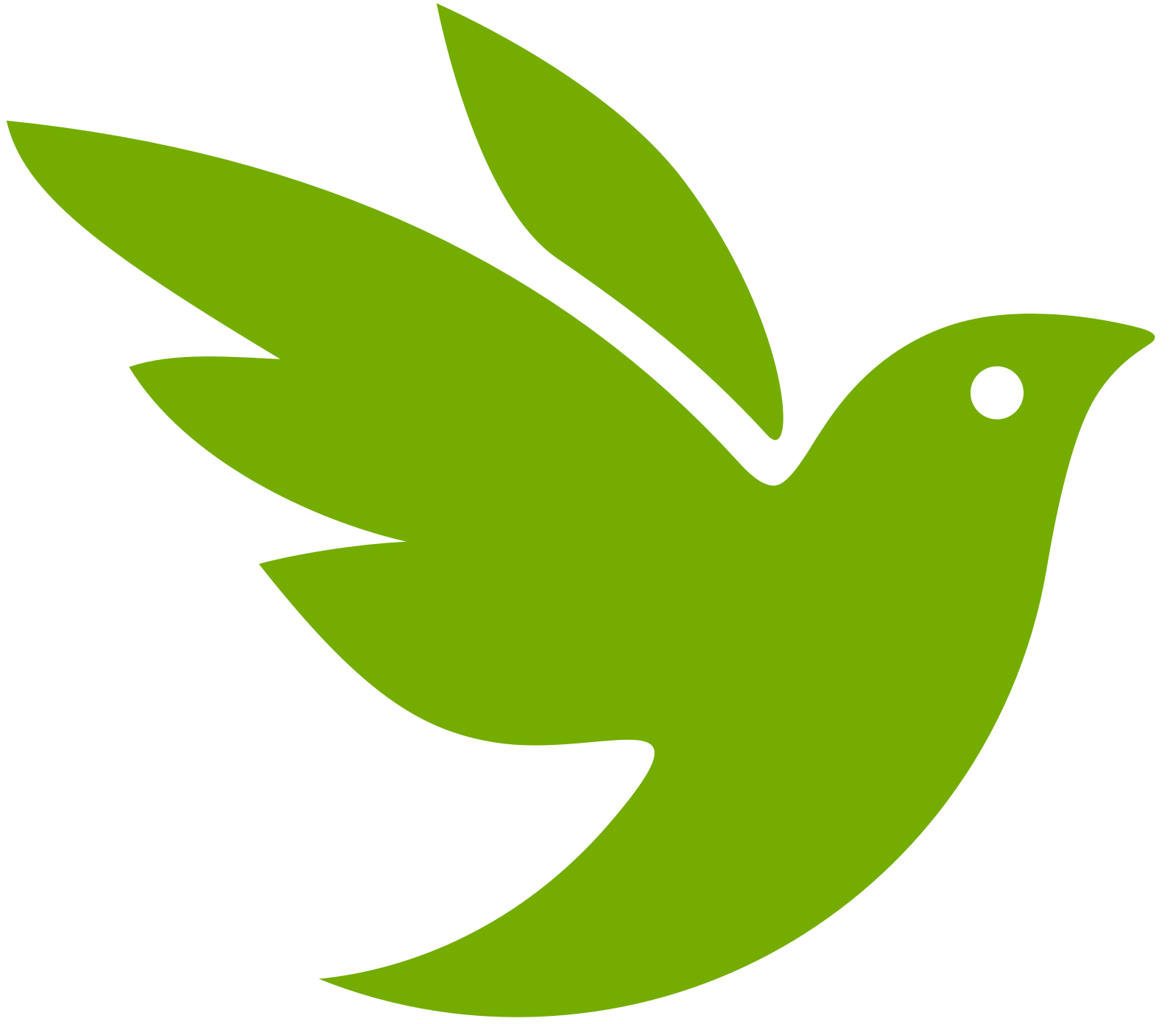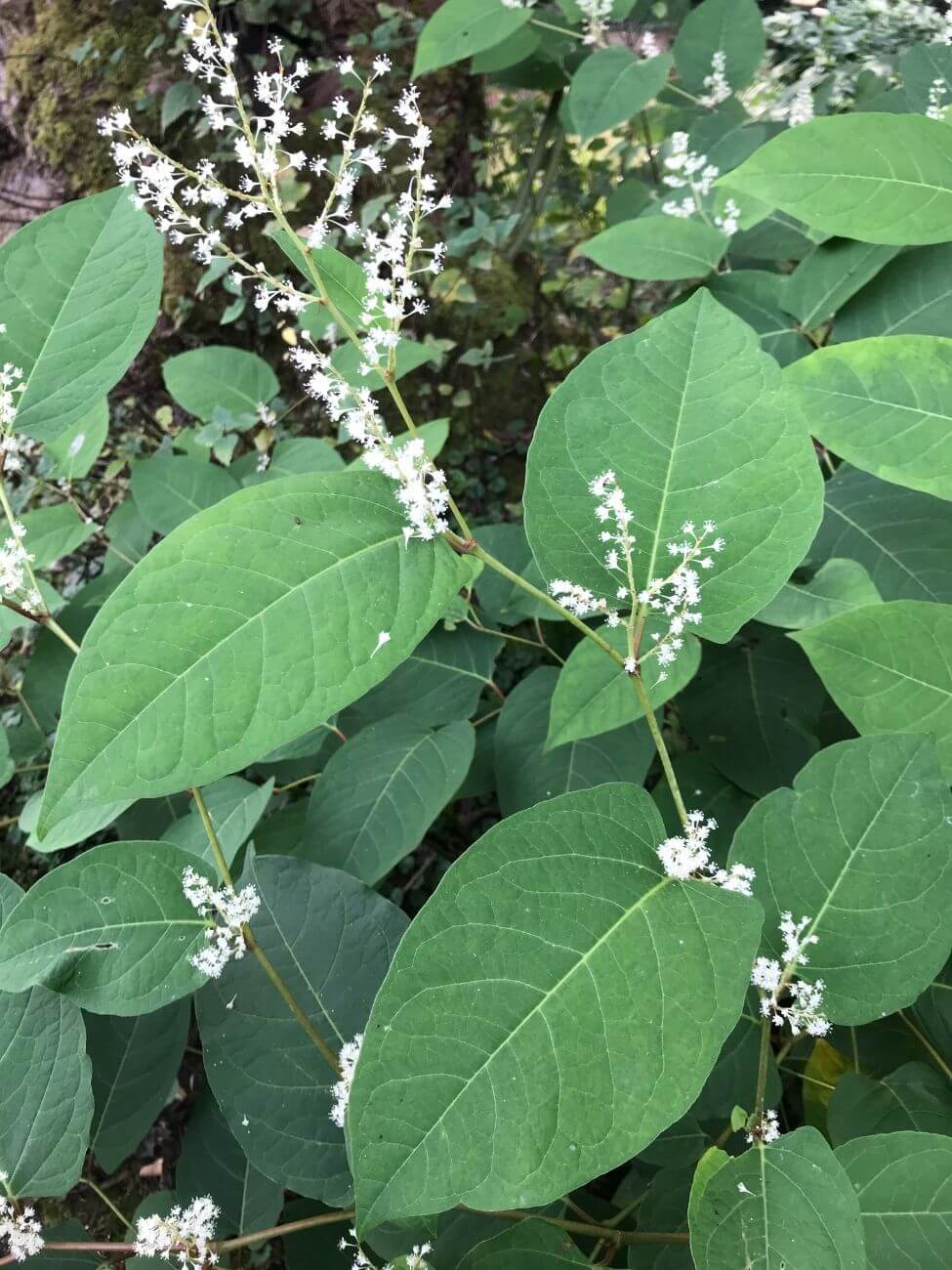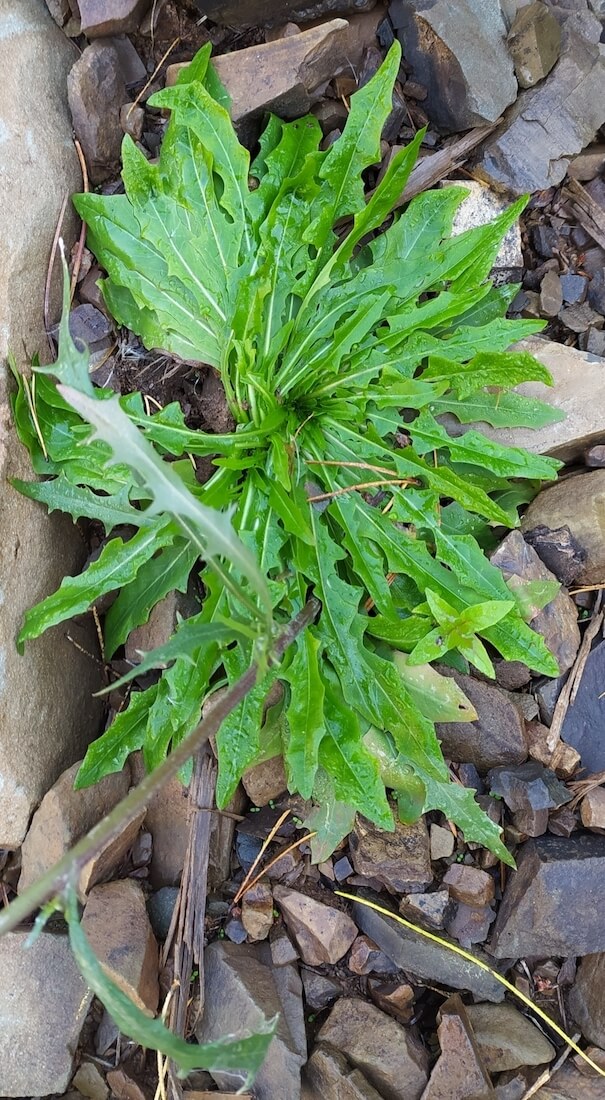
Kodiak Soil and Water Conservation District (KSWCD) has conducted an Invasive Species Program since 2004. This program includes surveys, outreach, education, and control of invasive species throughout the Kodiak Archipelago.
KSWCD coordinates the Kodiak Archipelago Cooperative Invasive Species Management Area (KA-CISMA) which partners with public and private land managers throughout the archipelago that manage invasive species.
Get more information about invasive species concerns on the Kodiak Archipelago on our resources page, including invasive species lists, our priorities, and identification information.

If you have seen an invasive species anywhere in the Kodiak archipelago, please report it to us! Even if you're not sure what it is or if it is invasive, please let us know about the suspected invasive species and we will help identify it and come up with a management plan if appropriate. You can contact our office with any suspected invasive species observations, not just plants! If another organization would be better notified, we can help facilitate communications with them or point you in the right direction. Sun'aq Tribe of Kodiak is the best contact point for crayfish seen outside the Buskin Lake (see below). There are a few ways to report suspected invasive species to us:
Or send us an email at info@kodiaksoilandwater.org with the following:

Post your observation on iNaturalist. If it is on our invasive species list, it will automatically fall under our "Kodiak Invasive Species Watch" project. If you don't know what it is, others can help identify it, and it will appear in our project if it is identified as an invasive species.
If you are taking photos with a smartphone or a camera with GPS capabilities turned on, the location should automatically be added to your observation when you upload your photos. You can also manually choose the location of the organism on the map. Please verify the date and location is accurate, and correct if needed.
If you'd like to stop by in person, please call us at 907-486-5574 and check our availability. We are in the office most days from 9am-5pm, but during the field season/growing season our availability may be reduced.
When visiting our office, take the hallway immediately to your left after entering the building's front doors and our office is the first door on the left.
.png)
KSWCD assists Sun'aq Tribe of Kodiak with crayfish capture events and outreach, and we have also assisted with eDNA sampling and other surveys.
For more crayfish information or to report any sightings outside of Buskin Lake, please contact Daniel Smith, Tribal Biologist with the Sun'aq Tribe:

.jpg)
.png)
Thanks to early detection & rapid response, highly invasive Himalayan Blackberry & White Sweetclover have not established in Kodiak. These two species are highly invasive in Alaska. They were both reported to our office by the public. If you aren't sure what it is, don't wait to call KSWCD! We rely on the public to report invasive species like these.
.jpg)
Approximately 100 acres of wildlife habitat has been restored in the Camp Island vicinity. This area is frequented by bears, deer, fox, otter, and other animals. Kodiak National Wildlife Refuge (KNWR) and KSWCD employees have worked together monitoring this site for many years. KNWR is a Kodiak Archipelago Cooperative Invasive Species Managment Area (KA-CISMA) partner.


Camp Island, July 2002

Camp Island, July 2022
Please do not plant or spread any of the species on this list within the state.
Numbers indicate invasiveness rating in Alaska expressed out of 100. Plants rated 60 and higher are considered very invasive in the state.
Click on a species name to view photos. Photos are for identification aid only. Not all photos are from Kodiak.
There are many more species that are invasive to the state that have not yet been found on the Kodiak Archipelago. The list below is only a list of species that have been found here already. For a more complete list of species that are invasive in the state, please visit the Alaska Exotic Plants Information Clearinghouse.
Green highlight = priority species for management by KSWCD
KSWCD may also prioritize plants based on other factors such as suitability to Kodiak's habitats, proximity to sensitive habitat, feasibility of eradication, and other localized threats or concerns.
Cross-through= all known infestations eradicated
NR = Not Rated. Its inclusion on this list means that we have reasonable concern that this will be a highly ranked species once assessed.
*= presence in Kodiak uncertain




Bohemian Knotweed
Fallopia ×bohemica (=Reynoutria × bohemica)
There are at least 41 sites on the Kodiak Archipelago that have or had Bohemian Knotweed infestations. Many sites had no detected knotweed in recent years; of the sites that have been treated, all have shown excellent response to herbicide and have greatly declined in size and density. Cutting, digging, and mowing are ineffective and can actually help spread this invader because it can regrow from stem or root nodes. This hybrid of Giant and Japanese Knotweed can have detrimental effects to many types of habitats and native species, and can also cause property damage if left unmanaged just like its parent species.




Reed Canarygrass
Phalaris arundinacea
Reed Canarygrass is a very tall grass with wide leaf blades that are nearly perpendicular to the stalk, long flower/seed heads, and is often a brighter green than our native grasses. A variegated cultivar called ribbongrass is often sold as a landscaping plant. Reed Canarygrass is a threat to salmon habitat, as it alters waterflow and can take over salmon spawning habitat when it invades stream and river banks. Left unchecked, it forms dense monoculture infestations, preventing other native plants from growing. Invasive wetlands species also alter the composition of insects and other invertebrates near our waterways, which can negatively impact the salmon who eat invertebrates (particularly in their early stages of development).

.jpg)


White Sweetclover
Melilotus alba (=Melilotus albus)
A single plant was found and removed from the Kodiak road system. Had it gone to seed, we may have seen large-scale infestations of this species similar to several places in mainland Alaska that are infested with sweetclover. A very similar plant, yellow sweetclover, is also highly invasive and not native to Kodiak. There are no close lookalikes of native Kodiak plants to sweetclover. Please report any plant you may suspect to be invasive to our office.




Meadow Hawkweed
Hieracium caespitosum (=Pilosella caespitosa)
There is only one known location of Meadow Hawkweed on Kodiak (in a residential area). Can sometimes be confused with the native Woolly Hawkweed, Hieracium triste (=Pilosells tristis), which is usually found in alpine and subalpine habitats. The native hawkweed has very woolly buds that are usually gray to black.




Orange Hawkweed
Hieracium aurantiacum (=Pilosella aurantiaca)
The most widespread of Kodiak's invasive species, orange hawkweed spreads by seed and also by rhizomes and stolons (runners). It is reportedly allelopathic, producing phytotoxic chemicals in its pollen grains that inhibit seed germination, seedling emergence, or regeneration of other plants. It forms dense monoculture patches when left unmitigated. It appears to offer little to no food value to bears, unlike the biodiverse native ecosystems it invades. While pollinators may visit blooming hawkweed, it does not support the larvae of many native insects such as butterflies and moths that require specific larval food plants and cannot eat hawkweed.




Himalayan Blackberry/Armenian Blackberry
Rubus discolor (=Rubus armeniacus)
Only one location of Himalayan Blackberry has been found on the archipelago to date, and it has since been eradicated. It is a widespread invasive in the Pacific Northwest, forming dense thickets and displacing native species. This species has very thick, thorny stems, with leaves that consist of 5 stalked leaflets.




Creeping/Canada Thistle
Cirsium arvense
Creeping Thistle is an invasive species that was likely introduced multiple times as a contaminant of feed, potted plants, and other agricultural products. It is now on the state prohibited and noxious weeds list. The thistle has less sharp spines than bull thistle, which is also found in Kodiak. There are no native thistles to Kodiak, and both of these purple-flowering thistles are considered highly invasive in Alaska.




Siberian peashrub
Caragana arborescens




Chokecherry
Prunus virginiana
Often planted as an ornamental, the leaves of this tree can be green, reddish, or purple. Calyxes are as wide as they are long (green triangular structures extending between the petals as shown in the 1st photo). When chopped down or under stress, this tree sends out "sucker" plants and can be difficult to remove once established.




English/Common Ivy
Hedera helix
Only known to be growing around homes in a few locations around Kodiak, and currently not known to have escaped into any natural areas here. This species is known to cause exterior damage to buildings and can be found covering trees and forest floors, shading out native species in places where it has escaped into the wild.




Creeping Buttercup
Ranunculus repens
Common in the vicinity of the city of Kodiak and Bells Flats, this species seems to be especially well-suited for Kodiak's climate and ecosystem. It is toxic to grazing animals. It completely carpets areas where it is allowed to thrive and is very difficult to eradicate.




Yellow Toadflax/Butter & Eggs
Linaria vulgaris
Currently, we have relatively few infestations of this plant around Kodiak. However, some gardeners may have these in their garden without knowing how invasive it can be. There are very few effective methods to eradicate this plant, and it can aggressively spread on its own. Resembling a snapdragon, it can easily be mistaken for that common garden plant. Unlike snapdragons, toadflax flowers have a spur on the back/base of each flower and also has thinner leaves.




English Holly
Ilex aquifolium
Only two locations known in Kodiak. It is an invasive species throughout the Pacific Northwest and Alaska, invading woodlands and natural areas.




Tansy ragwort
Senecio jacobaea
With only a few known infestations on the archipelago, KSWCD's goal is complete eradication of this species. Most recently, it has been discovered in the Bells Flats area. Please report ANY sightings of this species or similar-looking plants to KSWCD. We can help assist you with identification, removal, and proper disposal of these plants. Please do not move any parts of this plant without asking about proper disposal methods. Mowing is not effective, as it just "trains" the plants to flower at a lower height. A single plant can produce thousands to tens of thousands of seeds, and any nearby soil should be considered contaminated with its seeds as well. Tansy ragwort is toxic, sickening and even killing livestock. Bees that utilize tansy ragwort can product toxic honey. It is reportedly phytotoxic and therefore should be handled with care.




Bull Thistle
Cirsium vulgare
This species has mostly been documented along roadsides and highly disturbed, but it has been found escaping into natural areas on the Kodiak Archipelago. Not only are the prickles a nuisance, its seeds can persist in the soil for a long time, possibly 20 years or more.




Oxeye Daisy
Leucanthemum vulgare
Commonly planted in gardens and cemeteries, this beautiful flower is hiding an aggressive nature. We have found it completely taking over native wildflower meadows and natural areas, greatly reducing the biodiversity of the ecosystems it invades. While pollinators may visit them, many of our native insects specialize on particular native species and cannot utilize these plants.




Common Tansy
Tanacetum vulgare




Tall Buttercup
Ranunculus acris




Narrowleaf Hawksbeard / Crepis
Crepis tectorum




European Mountain Ash
Sorbus aucuparia
European Mountain Ash is widespread around Kodiak, often planted as an ornamental. Please consider planting a non-invasive tree as an ornamental such as Apple/Crabapple, Ussurian Pear, Red Elderberry, or Serviceberry. KSWCD does not currently have the capacity to manage this species, but we would like to emphasize its invasiveness and strongly discourage planting. Birds and other animals have spread their seeds to natural areas where it has started to establish.




Bird's Foot Trefoil Lotus uliginosus
The two records of Lotus uliginosus on Kodiak are the first records for the state for this species. It's highly invasive relative, Lotus corniculatus (AKEPIC rank 65), is sold in local "wildflower" seed mixes and may also become established.
The following is a list of other invasive plant species known on the Archipelago that are lower on our priority list. We discourage anyone from planting or spreading these species, but we currently do not have the capacity or resources to manage them for the archipelago.
Quackgrass (Elymus repens) 59
Common Dandelion (Taraxacum officinale) 58
Bishop's Goutweed (Aegopodium podagraria) 57
Alsike Clover (Trifolium hybridum) 57
Lady's Mantle (Alchemilla mollis) 56
True Forget-me-not (Myosotis scorpioides) 54
Timothy Grass (Phleum pratense) 54
Orchardgrass (Dactylis glomerata) 53
Perennial ryegrass (Lolium perenne) 52
Foxglove (Digitalis purpurea) 51
Fall Dandelion / hawkbit (Leontodon autumnalis) 51
Field Mustard (Brassica rapa) 50
Black Bindweed (Fallopia convolvulus) 50
Splitlip hempnettle ( Galeopsis bifida) 50
Brittlestem hempnettle (Galeopsis tetrahit) 50
*Suckling clover (Trifolium dubium) 50
Scentless false mayweed (Tripleurospermum inodorum) 48
Pale smartweed (Persicaria lapathifolia) 47
Spotted ladysthumb (Persicaria maculosa) 47
Sneezeweed (Achillea ptarmica) 46
Spiny sowthistle (Sonchus asper) 46
Prostrate knotweed (Polygonum aviculare) 45
Amur chokecherry (Prunus maackii) 45
Hairy cat's ear (Hypochaeris radicata) 44
Common plantain (Plantago major) 44
Common eyebright ( Euphrasia nemorosa) 42
Bladder campion (Silene latifolia) 42
Common chickweed (Stellaria media) 42
Dames rocket (Hesperis matronalis) 41
*Italian ryegrass ( Lolium multiflorum) 41
Shepherd's Purse (Capsella bursa-pastoris) 40
Birdeye pearlwort (Sagina procumbens) 39
Big chickweed (Cerastium fontanum ssp. vulgare) 36
Thyme-leaved Speedwell (Veronica serpyllifolia) 36
Common groundsel (Senecio vulgaris) 36
Common Nipplewort (Lapsana communis) 33
Pineapple Weed (Matricaria discoidea) 32
Corn spurry (Spergula arvensis) 32
For a list of known invasive plant species in all of Alaska, please visit the AKEPIC invasive plants list.
These plants have not been evaluated by AKEPIC for invasiveness yet. We would like to kindly encourage gardeners, landowners, and land managers to contain these plants whenever possible. Please don't plant a problem; there are many native and non-invasive plants that would do well in a Kodiak garden and support our native wildlife! See our Alternative Plants Suggestions for Kodiak Gardeners publication for some recommendations of what to plant instead of invasive and aggressive garden plants in Kodiak.
Common Oat ( Avena sativa)
Garden Cornflower (Centaurea cyanus)
Petty Spurge (Euphorbia peplus)
Orpine, Witch's Moneybags (Hylotelephium telephium)
Golden Chain Tree (Laburnum anagyroides)
Purpleanther Field Pepperweed (Lepidium heterophyllum)
Purple Toadlfax (Linaria purpurea)
Mountain Tarweed (Madia glomerata)
Tibetan Cowslip (Primula florindae)
European Gooseberry (Ribes uva-crispa)
Common Wheat (Triticum aestivum)
*Garden Vetch (Vicia sativa)
False Spiraea/Sorbaria (Sorbaria sorbifolia)
Field Pepperweed/Field Peppergrass (Lepidium campestre)
Yellow archangel (Lamium galeobdolon)
The following invasive animals have been recorded in the Kodiak Archipelago. Other animals that are invasive in the state of Alaska but have not been observed in Kodiak are not recorded here. For more information or to report invasive animals, download the AK Invasives ID app or visit the Alaska Invasive Species Partnership website. Please also email Kodiak Soil & Water Conservation District if you have found something you think might be invasive, even if you are unsure of its identity at info@kodiaksoilandwater.org. Please include photos and a GPS location/map waypoint if possible. Public reports are often the first detections of invasive species. Please help us with Early Detection, Rapid Response by reporting suspicious organisms you encounter!
Signal Crayfish (Pacifastacus leniusculus)
Garden Snail (Cornu aspersum)
Brown-lipped Snail (Cepaea nemoralis)
Leopard Slug (Limax maximus)
Dusky Slugs (Arion spp.)
Rock Pigeon (Columba livia)
European Starling (Sturnus vulgaris)
Norwegian Rat (Rattus norvegicus)